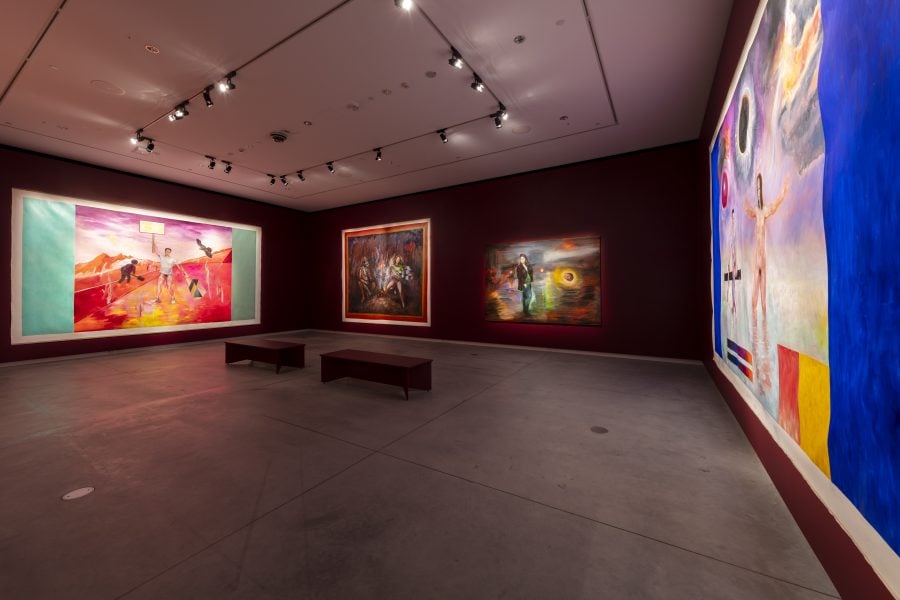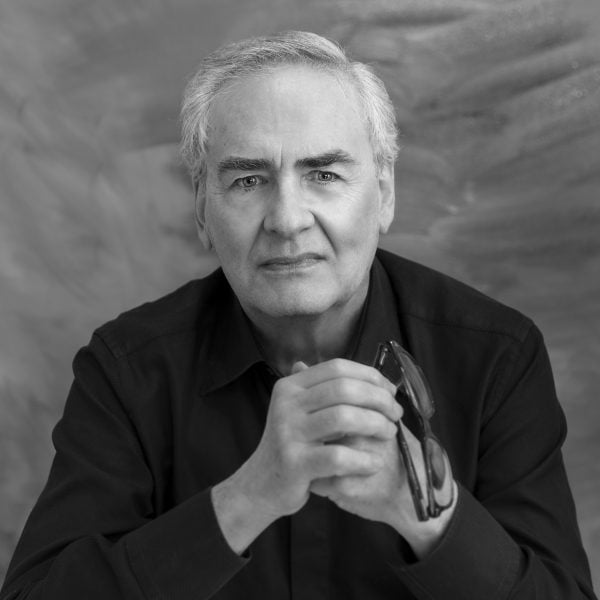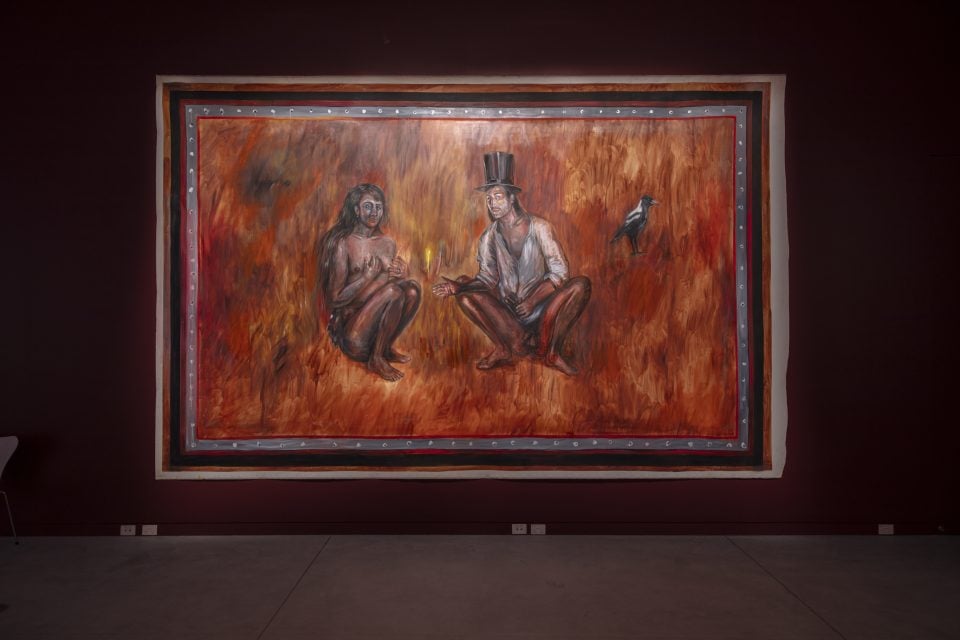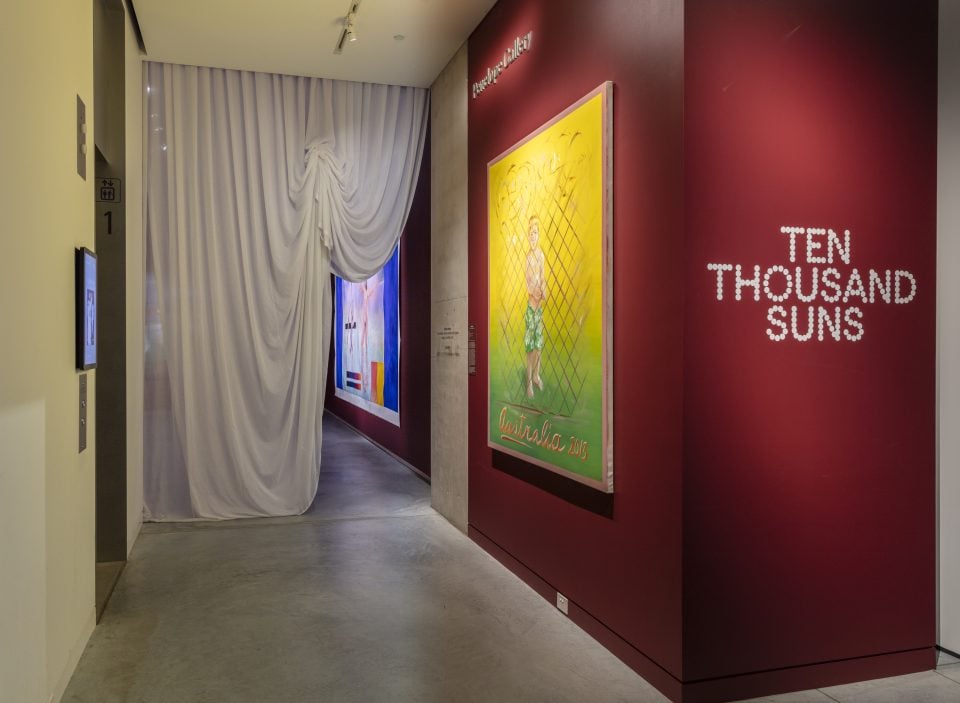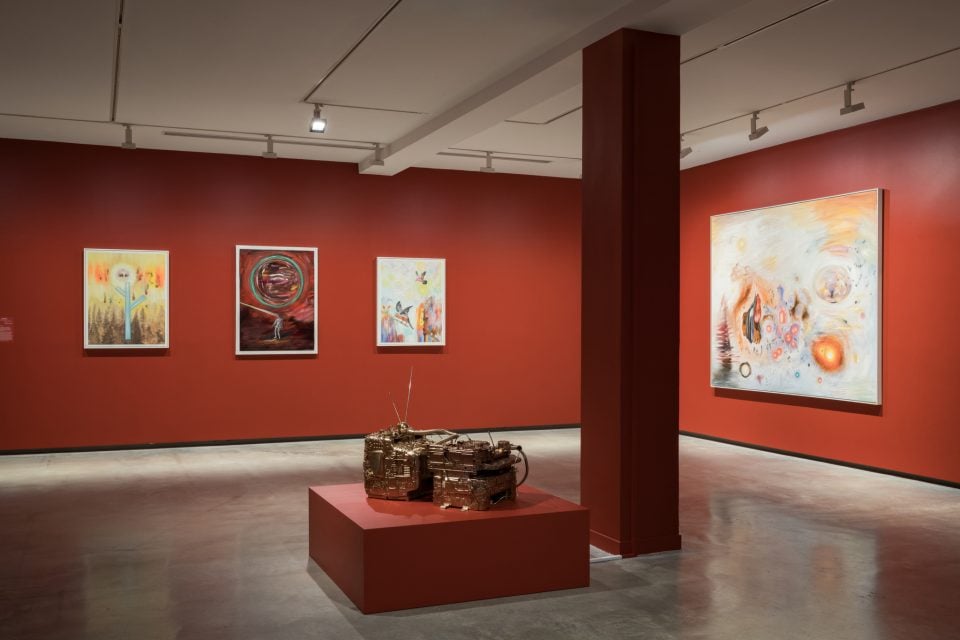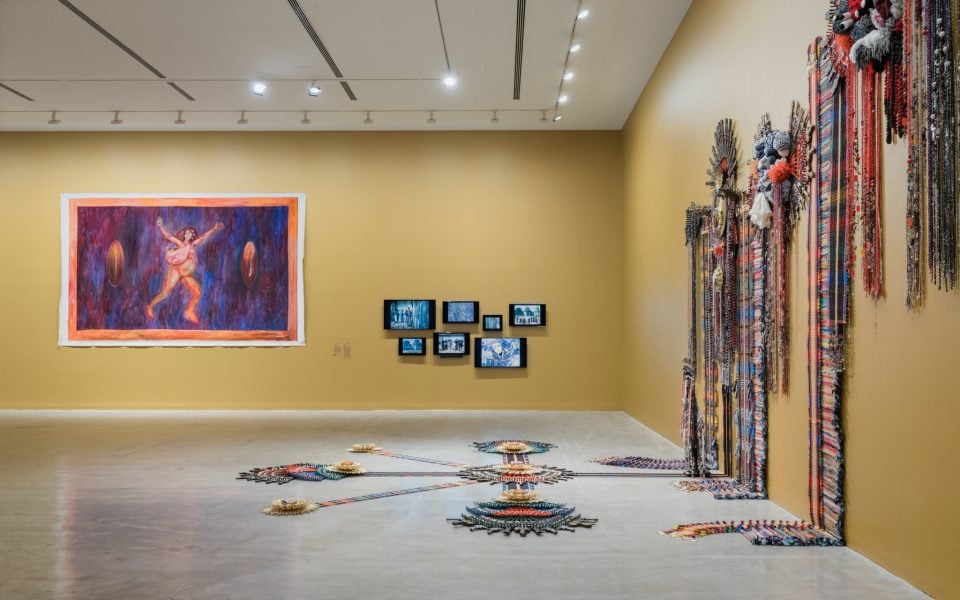Chau Chak Wing Museum
Australia, 2013
Guacolda Brunhilde and Sacerdote Wotan, 2011
The Proposition, 2021
Valdivia-Mime y Lautaro-Siegfried, 2011
That is No Man, 2010
2021, 2020
oil on canvas
Courtesy the artist and Kalli Rolfe Contemporary, Melbourne
If you were to ask Juan Davila why he began to paint, he might answer, as he has before, “An enjoyment … does not need explanation.” Over an artistic career spent lacerating political figures, government policy, and state control, the artist has not felt the need to explain his motivations.
Since he started out, Davila’s paintings have unflinchingly interrogated cultural, sexual, and social identities, taking cues from popular culture, political discourse and mythology to create a complex and provocative body of work. Born in Chile, Davila moved to Melbourne in 1974 after the fall of the socialist Allende government. His work is devoid of social directives, and is instead rich with allusions to the joys, anxieties, shames, and triumphs of the contemporary moment. Davila either refuses to decide on a position, or if he has, won’t reveal it. Instead, he moves through narratives, nightmares, and nations like a dreamer through the subconscious. Like chasing down a stranger who turns to reveal that his face is your own, to try and decode Davila is to confront your internal biases.
Often depicting surreal scenarios, each piece, as vibrant and heated as the flames Davila paints, moves beyond the subject it appears to be critiquing, and grapples instead with making something beautiful “just because we still can, and it cannot be controlled.”
Museum of Contemporary Art Australia
Enriqueta-Sieglinde Flees, 2011
oil on canvas
Untitled, 2021
oil on canvas
Untitled, 2023
oil on canvas
Untitled, 2021
oil on canvas
Private collection, Melbourne
After Image Wilderness, 2010
oil on canvas
Courtesy the artist and Kalli Rolfe Contemporary, Melbourne.
Asked why he chose painting, Juan Davila once answered, ‘An enjoyment … does not need explanation.’ Over an artistic career spent lacerating political figures, government policy and state control, the artist has indeed consistently refused to explain himself.
From the outset, Davila’s paintings have unflinchingly interrogated cultural, sexual and social identities, taking cues from popular culture, political discourse and mythology to create a complex and provocative body of work. Born in Chile, Davila moved to Naarm/Melbourne in 1974 after the fall of the socialist Allende government. However, his work does not suggest what ‘should be’, instead richly illustrating the joys, anxieties, shames and triumphs of the contemporary moment. Psychological and psychoanalytic themes are often present, but the artist refuses to articulate or reveal a clear position, prompting us to question our own biases.
